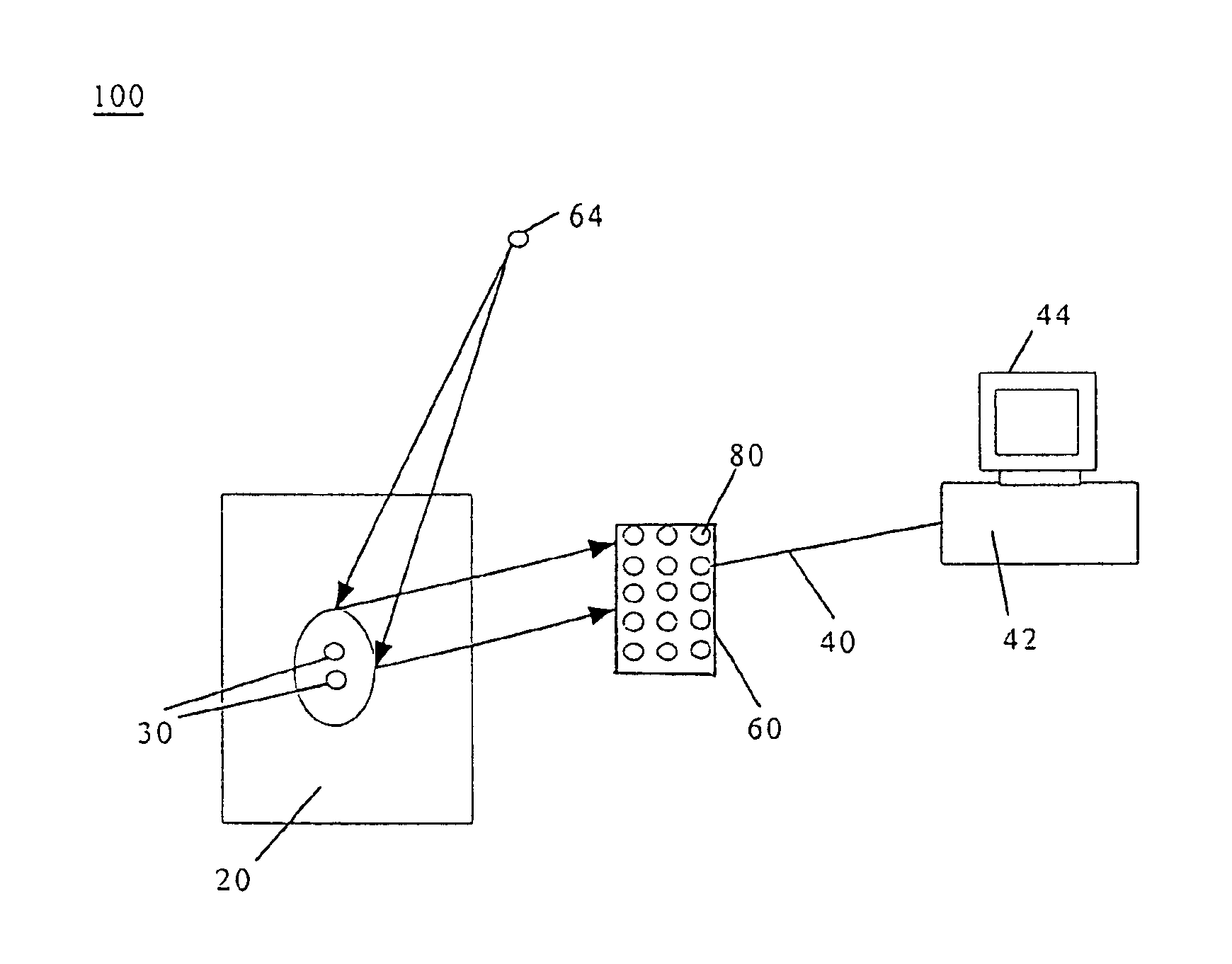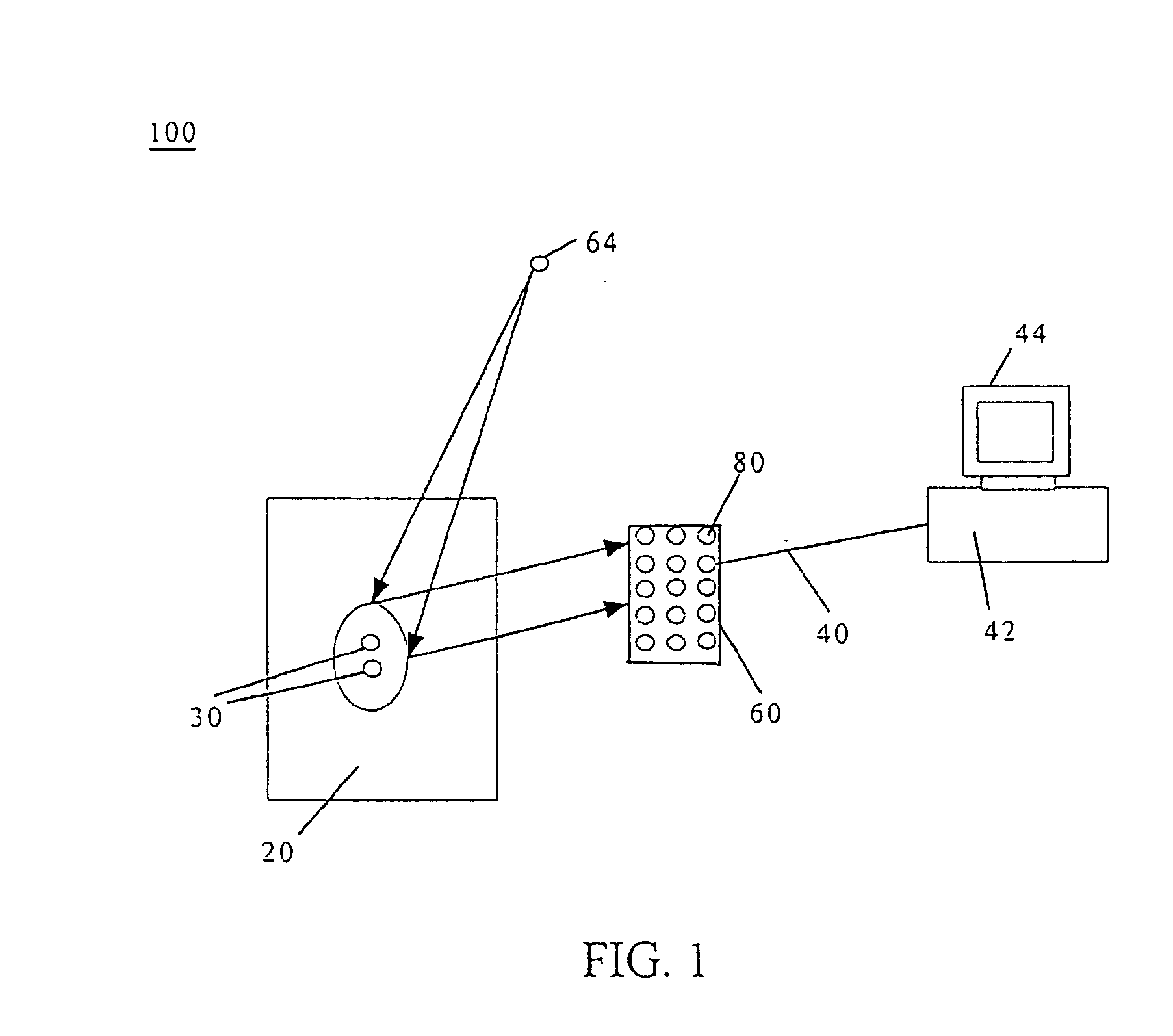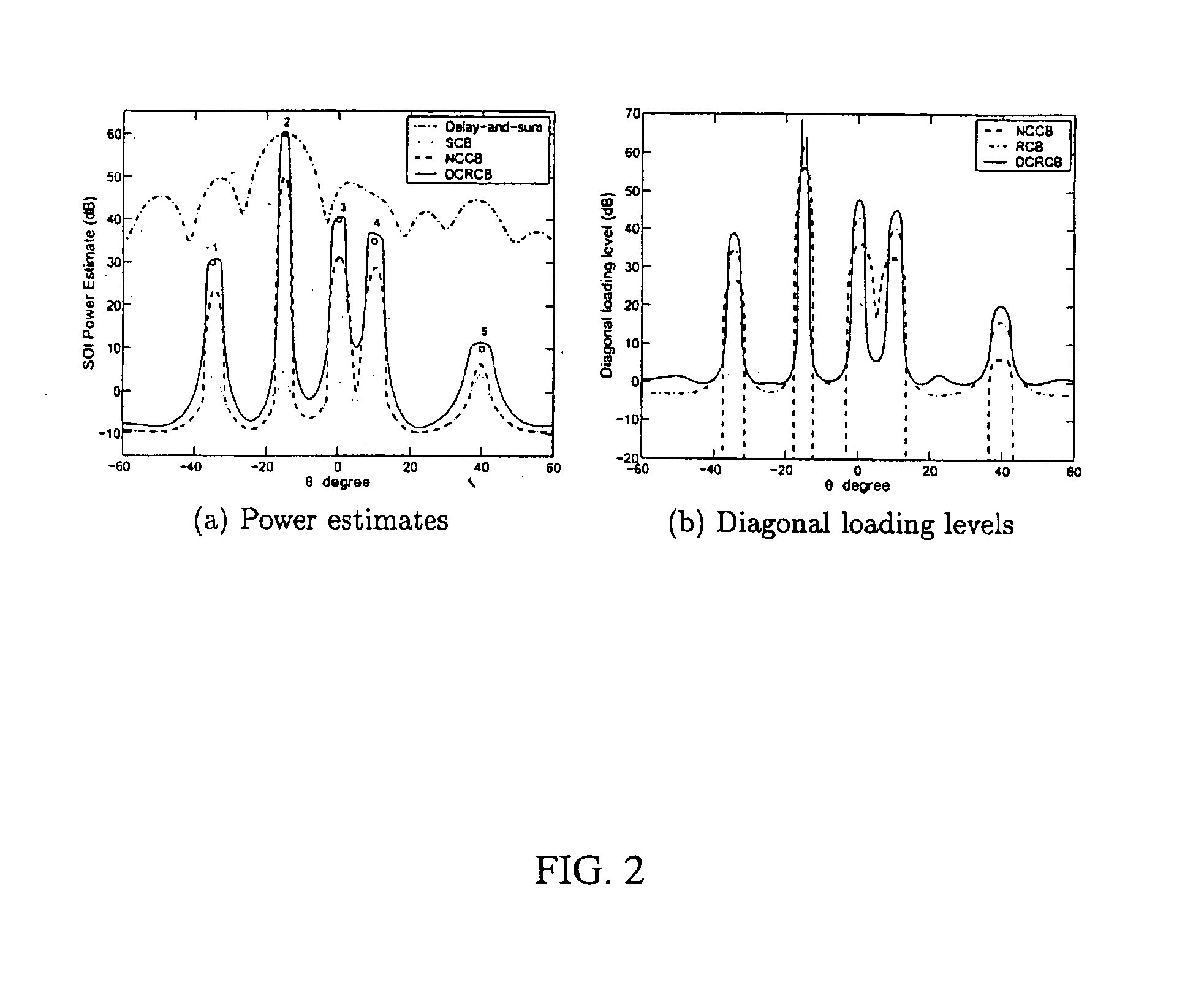Doubly constrained robust capon beamformer
a beamformer and robust technology, applied in direction finders, instruments, antennas, etc., can solve the problems of steering vector error, general steering vector error, and capon beamformer performance can become worse than standard beamformers
- Summary
- Abstract
- Description
- Claims
- Application Information
AI Technical Summary
Benefits of technology
Problems solved by technology
Method used
Image
Examples
examples
[0059]It should be understood that the examples and embodiments described herein are for illustrative purposes only and that various modifications or changes in light thereof will be suggested to persons skilled in the art and are to be included within the spirit and purview of this application. The invention can take other specific forms without departing from the spirit or essential attributes thereof.
[0060]Numerical examples are provided in this section to compare the performances of the delay-and-sum beamformer, SCB, NCCB, RCB and the DCRCB according to the present invention. In all of the examples considered below, a uniform linear array with M=10 sensors and half-wavelength sensor spacing is assumed having a spatially white Gaussian noise covariance matrix given by Q=I.
[0061]For NCCB, ζ=βM,
where β(β≧1) is set as a user parameter. The larger the β, the closer NCCB is to SCB. On the other hand, the smaller the β, the closer NCCB is to the delay-and-sum beamformer. When β=1, the ...
PUM
 Login to View More
Login to View More Abstract
Description
Claims
Application Information
 Login to View More
Login to View More - R&D
- Intellectual Property
- Life Sciences
- Materials
- Tech Scout
- Unparalleled Data Quality
- Higher Quality Content
- 60% Fewer Hallucinations
Browse by: Latest US Patents, China's latest patents, Technical Efficacy Thesaurus, Application Domain, Technology Topic, Popular Technical Reports.
© 2025 PatSnap. All rights reserved.Legal|Privacy policy|Modern Slavery Act Transparency Statement|Sitemap|About US| Contact US: help@patsnap.com



